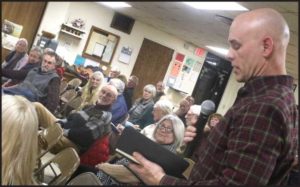LET'S GET SOME OF STATE'S $1.5B IN GREEN AID
It's Time To Seize
Energy Future Locally
 The local energy debate shows little sign of dying down. On the one side are opponents of any further development of fossil fuels, including natural gas, and on the other side are advocates for expanding the natural-gas infrastructure in our area
The local energy debate shows little sign of dying down. On the one side are opponents of any further development of fossil fuels, including natural gas, and on the other side are advocates for expanding the natural-gas infrastructure in our area
in hopes of luring new industrial development.
Most people, however, are somewhere in the middle. National polling suggests that majorities now see climate change as a growing threat
we have to do something about, which ultimately means getting off fossil fuels, including natural gas.
Climate change statistics continue to relentlessly worsen, while the costs of mitigating pollution and dealing with disruptive events like floods, hurricanes, and unreliable weather patterns keep rising. These external costs are borne by taxpayers, consumers, property owners, and the general public.

You have reached your limit of 3 free articles
To Continue Reading
Our hard-copy and online publications cover the news of Otsego County by putting the community back into the newspaper. We are funded entirely by advertising and subscriptions. With your support, we continue to offer local, independent reporting that is not influenced by commercial or political ties.

